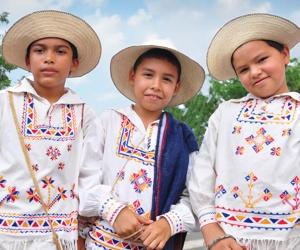Introduction to Panama
Hi, and welcome to the southernmost of the Central American nations, Panama.  This sunny and semi-exotic country is south of Costa Rica and north of Colombia. Panama is slightly smaller than South Carolina. It is marked by a chain of mountains in the west, moderate hills in the interior, and a low range on the east coast. There are extensive forests in the fertile Caribbean area of Panama. Explored by Columbus in 1502 and by Balboa in 1513, Panama was the principal shipping port to and from South and Central America in colonial days. In 1821, when Central America revolted against Spain, Panama joined Gran Colombia, which had already declared its independence. For the next 82 years, Panama attempted unsuccessfully to break away from Colombia. After a U.S. proposal for canal rights over the narrow isthmus was rejected by Colombia, Panama proclaimed its independence with U.S. backing in 1903. In exchange, the U.S. got the Canal Zone—a 10-mile-wide strip across the isthmus—and considerable influence in Panama's affairs.The Panama Canal bisects the isthmus at its narrowest and lowest point, allowing passage from the Caribbean Sea to the Pacific Ocean. But now currently Panama has control of the Canal and receives all profits from it.
This sunny and semi-exotic country is south of Costa Rica and north of Colombia. Panama is slightly smaller than South Carolina. It is marked by a chain of mountains in the west, moderate hills in the interior, and a low range on the east coast. There are extensive forests in the fertile Caribbean area of Panama. Explored by Columbus in 1502 and by Balboa in 1513, Panama was the principal shipping port to and from South and Central America in colonial days. In 1821, when Central America revolted against Spain, Panama joined Gran Colombia, which had already declared its independence. For the next 82 years, Panama attempted unsuccessfully to break away from Colombia. After a U.S. proposal for canal rights over the narrow isthmus was rejected by Colombia, Panama proclaimed its independence with U.S. backing in 1903. In exchange, the U.S. got the Canal Zone—a 10-mile-wide strip across the isthmus—and considerable influence in Panama's affairs.The Panama Canal bisects the isthmus at its narrowest and lowest point, allowing passage from the Caribbean Sea to the Pacific Ocean. But now currently Panama has control of the Canal and receives all profits from it.
Day 1-Panama
As I got off my flight from Atlanta, Georgia to Panama City, Panama, I immediately noticed the expansive skyline. It was marvelous. The city was the largest city in Panama as well as the capital city. The city itself was destroyed in 1671 by a pirated called Henry Morgan, and it was rebuilt two years later. I will try to blend in with the natives here and live by their customs. Today, due to the jet lag, I went to my hotel and took a nap. When I awoke I put on some of the fancily detailed clothes that are customarily worn during most days here. As I strolled through the great city, I walked to the Pacific entrance to the Panama Canal. I saw a massive ship sailing through it with such ease.
that are customarily worn during most days here. As I strolled through the great city, I walked to the Pacific entrance to the Panama Canal. I saw a massive ship sailing through it with such ease. In Spanish, I talked to one of the crew members maintaining one of the locks that ships had to go through to progress through the canal. I asked why there were so few workers managing the lock and he said they were currently low on employees, so I volunteered to work for no money the next two days. The worker, whose name I later learned was Carlos, was so happy and immediately hired me. He taught me the fundamentals of the locks and my job was to pump the water into the locks. So I immediately got to work and before I knew it, my shift was done. After that Carlos and I went to his favorite place to eat, La Rana Dorada, which had the best craft beer in Panama City. We ate much through the night where I learned much about Panama’s culture which included their food and traditions.
In Spanish, I talked to one of the crew members maintaining one of the locks that ships had to go through to progress through the canal. I asked why there were so few workers managing the lock and he said they were currently low on employees, so I volunteered to work for no money the next two days. The worker, whose name I later learned was Carlos, was so happy and immediately hired me. He taught me the fundamentals of the locks and my job was to pump the water into the locks. So I immediately got to work and before I knew it, my shift was done. After that Carlos and I went to his favorite place to eat, La Rana Dorada, which had the best craft beer in Panama City. We ate much through the night where I learned much about Panama’s culture which included their food and traditions.
No comments:
Post a Comment